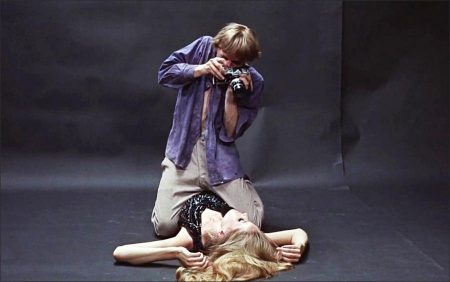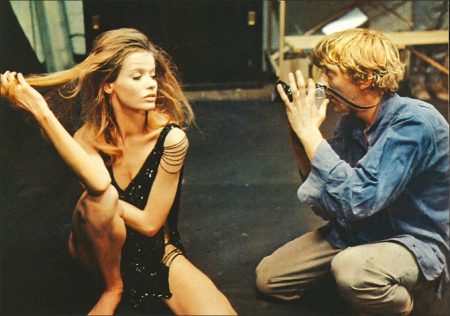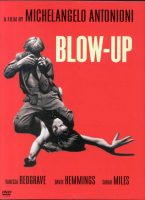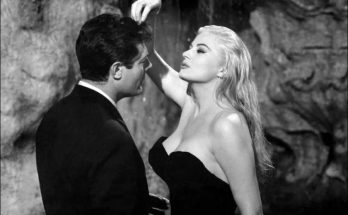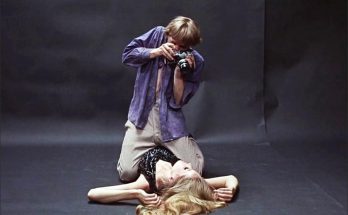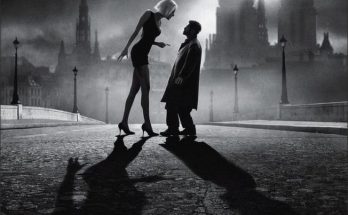Italian filmmaker Michalengelo Antonioni’s Blow Up tells the story of fashion photographer Thomas (David Hemmings) with a murder in his 60s in London. Antonioni made a film that questioned both the political attitude of his hero and how the audience watched the film.
In many ways, Blow Up, it’s the best film made about cinema, because Antonioni realized the celluloid’s fragile structure and the need to preserve spectacular images. The film is therefore very impressive – at the end of the film, Antonioni stated in sorrow, that if one does not continue to watch, or unless its meaning is scrutinized, one day I will see the Murder (or make no sense to anyone).
When Thomas accidentally photographs a murder in a quiet park, he attempts to enchant his photographs to portray an encoded narrative (the interaction between still photographs is perhaps one of the most spectacular scenes in film history). Although Thomas respects the movement, he does not actually understand it. Thus, the effort to revive the images leads to a call for action, even more interesting, evoking the need for a universal self-discovery. Thomas has been busy with a group of mime artists throughout the film, but he is not impressed by the superficial show they display. However, at the end of the film he realizes that the image that is not there does not exist. Blow Up suggests that an image would not be an image without politics.
The subject of the 1966 film ow Blow Up in by Michelangelo Antonioni, which deals with semiotic problems, is covered by the coincidence of the photographic Thomas, the owner of a photography studio in London, who realized the murder as a result of a detailed examination. Starring David Hemmings, Sarah Miles and Vanessa Redgrave.
Thomas wants to photograph non-artificial, non-artificial aspects of modern life for the project he is working on. For this purpose, it takes pictures by walking around the streets, parks, and suburbs. The fact that photography is included in the film makes the semiotic position even more complex. On the other hand, a film with a cinematography story, when processed with photographic elements, creates something that is functionally matched to reality, including credibility of important elements in the film. This constitutes the artistic framework of Antonioni.
The composition of Blow Up, which is considered one of the most important films of the new realism directors Antonioni, is based on the combination of a main development and a side narrative that shows the life of Thomas. Antonioni’s film was presented to the audience on the criteria of contemporary cinema. Without presenting the details in the photograph to the audience, it manages to reach the result. This is given by Thomas enlarging the details one by one when he noticed a small detail when he began to enlarge and examine the photos.
In the film, in which certain frames are given from England, Thomas is introduced to the audience with his dissatisfaction and love of work. Thomas, who has some problems in his private life, is a cold, cocky type who put himself at the center of his life. Thomas, in fact, is someone who has taken on indifferent attitudes in order to overcome the problems in his life.
The images of the film are quite successful, based on the plot that moves the audience without boring the audience and even includes the audience. There are also eye-catching details in the film. As Thomas walks through the city, he enters an antique shop. Here, among many things, a large propeller strikes and takes. He doesn’t know what to do next when he comes to this prop house. Although the propeller and antique dealer appear to be unnecessary in the film, this actually indicates that the director presents a piece of himself to the audience. This can be presented as proof that Antonioni is identified with his hero.
In short, Blow Up and Antonioni include in his films the things he portrays in the world of imagination and contradictions in life. Blow Up is a very successful film and has already taken its place among the movies to watch.
All about Michelangelo Antonioni’s Blow Up Movie.
Blow-Up (1966)
Directed by: Michelangelo Antonioni
Starring: David Hemmings, Vanessa Redgrave, Sarah Miles, John Castle, Jane Birkin, Gillian Hills, Peter Bowles, Veruschka von Lehndorff, Julian Chagrin, Claude Chagrin, Susan Brodrick
Screenplay by: Michelangelo Antonioni, Tonino Guerra
Cinematography by: Carlo Di Palma
Film Editing by: Frank Clarke
Costume Design by: Jocelyn Rickards
Art Direction by: Assheton Gorton
Music by: Herbie Hancock
Distributed by: Metro-Goldwyn-Mayer
Release Date: December 18, 1966 (US), March 16, 1967 (UK)
Visits: 96
